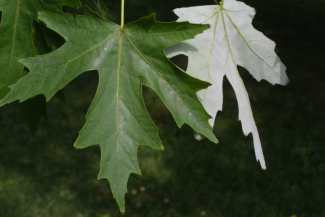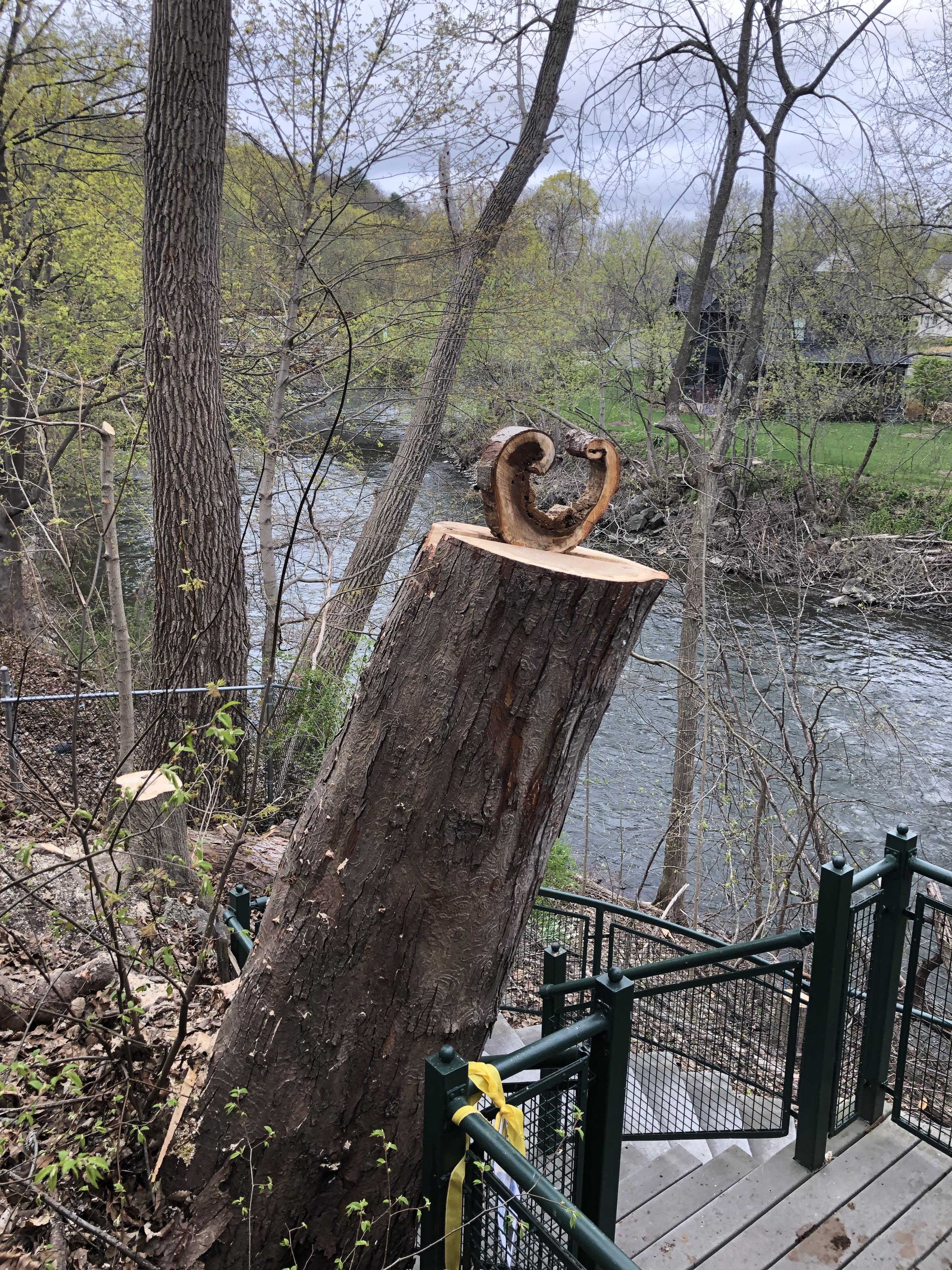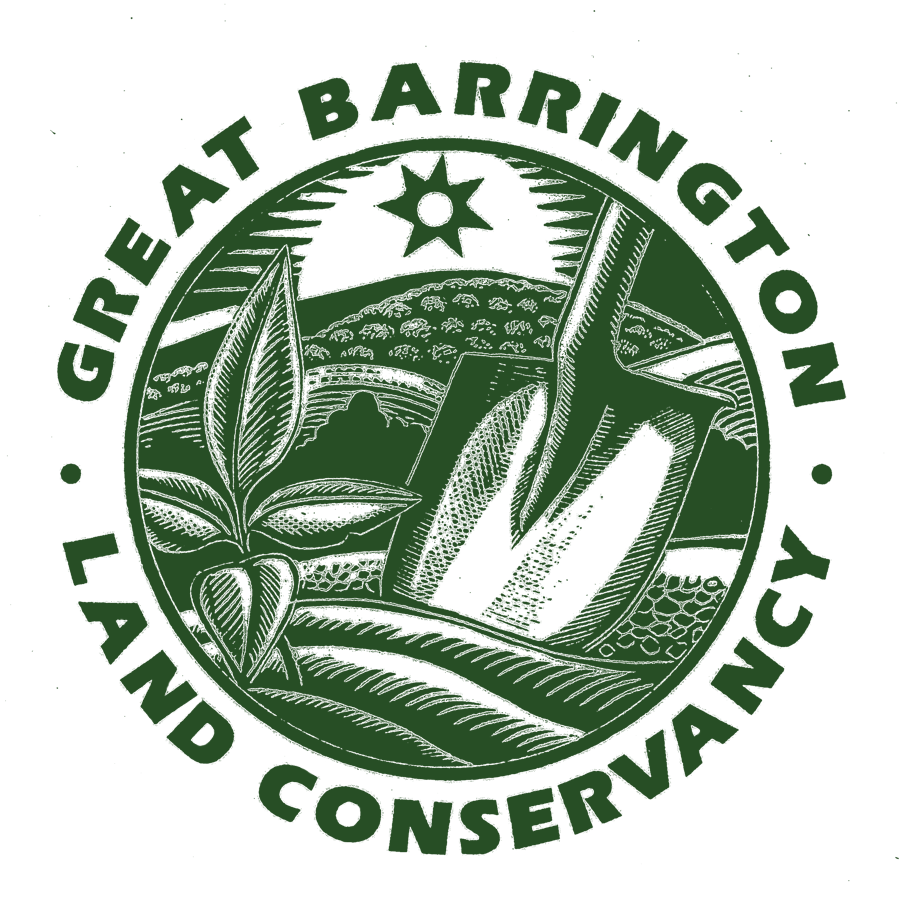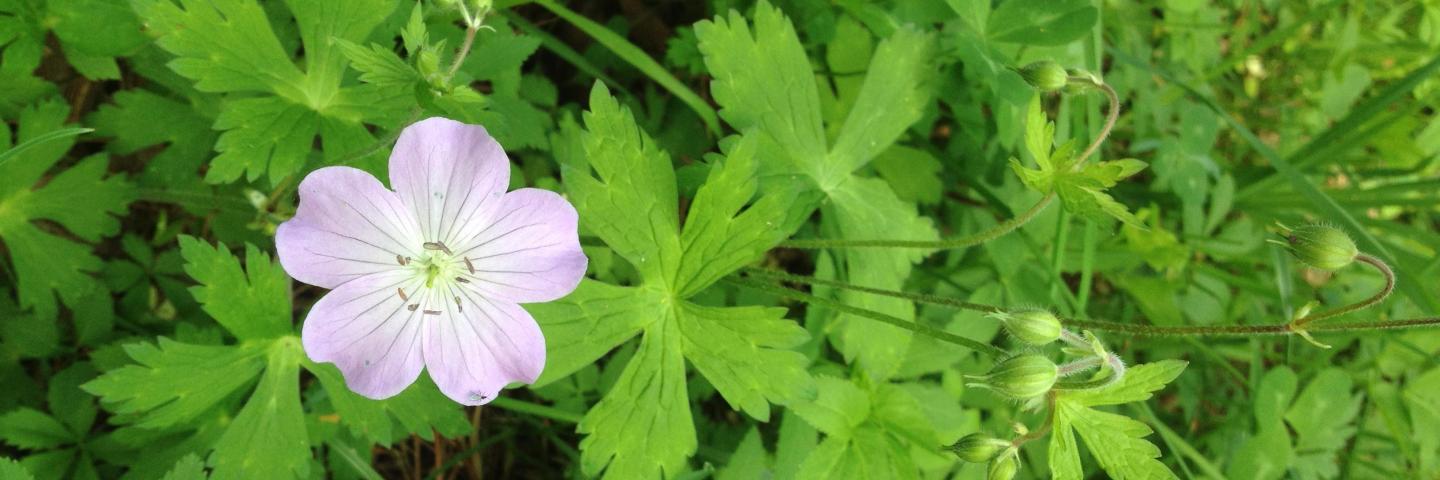Saying Goodbye to Our Treasured Silver Maple
By Christine Ward 
For years Housatonic River Walk visitors have enjoyed getting up-close to a large silver maple adjacent to our Main Street stairway. Silver maples (Acer saccharinum) “most commonly grow in river floodplains, and although the trees are not necessarily tall, the trunks can get very large in diameter. The undersides of the deeply toothed leaves are silvery, in contrast to the shiny green upper surfaces.” ¹ River Walk’s iconic tree, with its exceptional swirled bark, has been a key feature in our guided tree walks.
In recent years we have observed the formation of a large Dryad’s Saddle mushroom that has appeared annually on the trunk. In Greek mythology a dryad is a spirit that protects trees. The Dryad’s Saddle mushroom reminds us to consider the magical spirit of our silver maple. Like a dryad, the majority of the fungus, it’s thread-like mycelia, is unseen. The fruiting body is what we see above ground, which allows the mushroom to spread its spores.
But this fungus can result in white-rot of the tree’s heartwood which leads to the decline of the tree. This has, unfortunately, come true for our beloved silver maple— last year a large leader broke off from the main trunk. The time has come to remove the majority of the tree to ensure the safety of visitors and to prevent trail damage.
Working with a local licensed arborist, the top portion of the tree was cut down, keeping a 7-foot trunk section in place and laying the other trunk sections within the bank area. While we will miss our old friend, it is important to remember that each tree, whether it is a living and thriving tree or a decaying and dying tree, is essential to a healthy forest. “Seemingly dead trees are teaming with life, they play a vital role in the lifecycles of hundreds of species of wildlife, providing a place to nest, rest, eat and grow.” ² They also provide protection for seedlings and a tasty meal of bugs for a passing woodpecker.
In addition, decaying trees, also called snags, are essential to the health of our riverside habitat because they enrich the soil around them. The mycelium of the Dryad’s Saddle will assist in breaking down the tough wood and returning nutrients to the forest floor. Fallen trees also provide a new abundance of sunlight to the surrounding trees. By removing the crown of our silver maple, a nearby sugar maple (Acer saccharum) that was planted years ago as a part of our ongoing habitat restoration will grow quickly to fill the empty space in the canopy.
So although we will be saying goodbye to an old friend, River Walk’s silver maple will live on, supporting the entire forest ecosystem for years to come.
Sources:
1. https://gobotany.nativeplanttrust.org/species/acer/saccharinum
2. https://fpdcc.com/did-you-know-dead-trees-play-an-important-role/
3. https://mdc.mo.gov/discover-nature/field-guide/dryads-saddle


